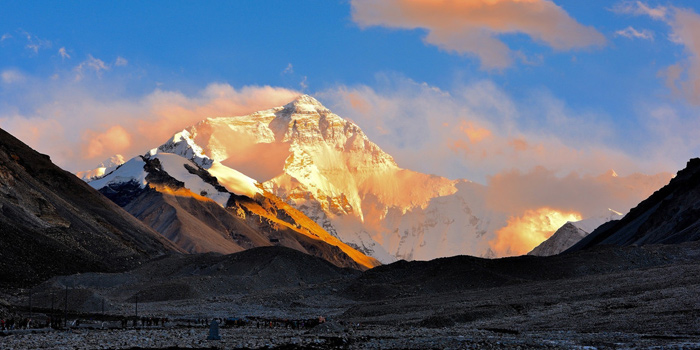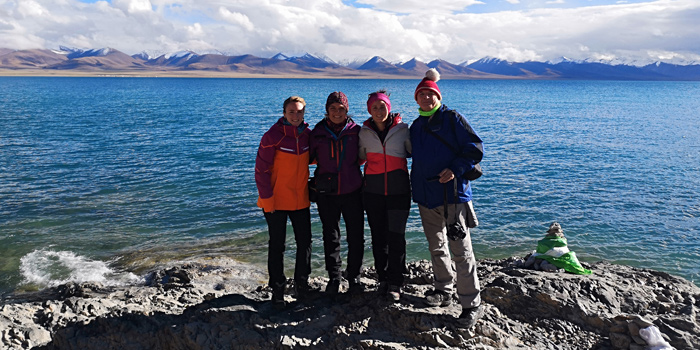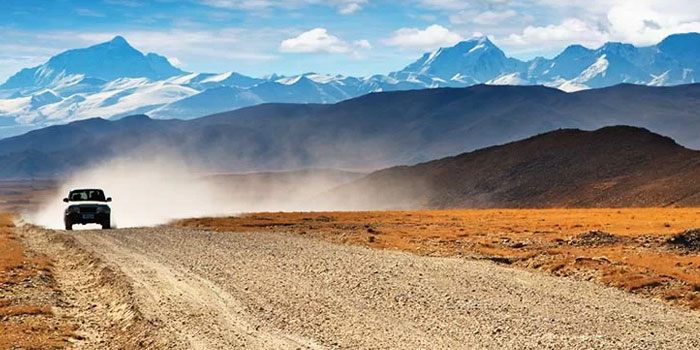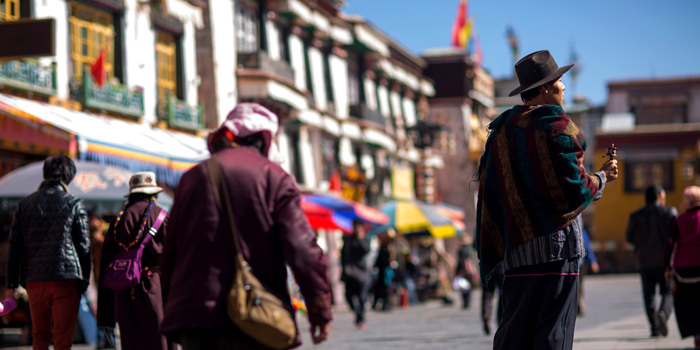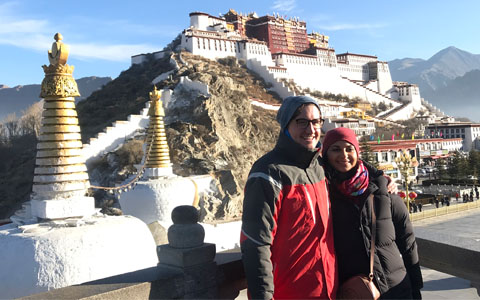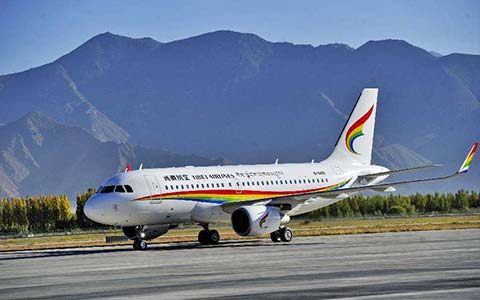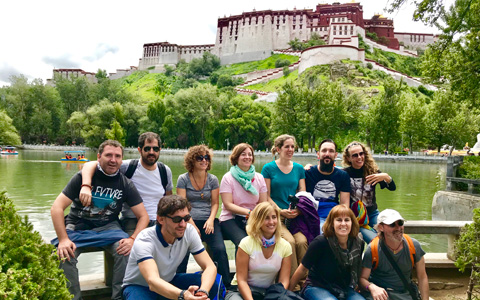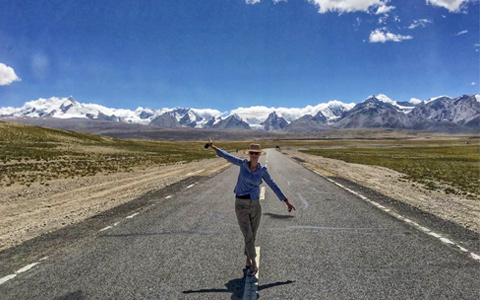20 Amazing Tibet Facts: to Inspire Your Lifetime Adventure to Tibet
Want to know more about Tibet, the mysterious land of the Himalaya? Here, we unveil 20 interesting facts that will transport you to a world of awe-inspiring landscapes, spiritual allure, and rich culture and traditions.
 1. Tibet is at an average elevation of over 4,000 meters
1. Tibet is at an average elevation of over 4,000 meters
 2. At Tibet Everest Base Camp, you can stand eye-to-eye with the majestic world’s highest peak
2. At Tibet Everest Base Camp, you can stand eye-to-eye with the majestic world’s highest peak
 3. You can kora around the sacred center of Four World Religions - Mount Kailash in Tibet
3. You can kora around the sacred center of Four World Religions - Mount Kailash in Tibet
 4. Buddhism forms the bedrock of Tibet’s culture and daily life
4. Buddhism forms the bedrock of Tibet’s culture and daily life
 5. There are over 7000 monasteries in Tibet
5. There are over 7000 monasteries in Tibet
 6. The five colors seen everywhere in Tibet have specific meanings for Tibetan Buddhism
6. The five colors seen everywhere in Tibet have specific meanings for Tibetan Buddhism
 7. Tibet is suitable for visiting all year round
7. Tibet is suitable for visiting all year round
 8. Tibet has its unique Tibetan Lunar Calendar
8. Tibet has its unique Tibetan Lunar Calendar
 9. Summer in Tibet is the season for festivals
9. Summer in Tibet is the season for festivals
 10. Lhasa is not the only city that has an airport in Tibet
10. Lhasa is not the only city that has an airport in Tibet
 11. Tibet has a modern high-speed railway as well
11. Tibet has a modern high-speed railway as well
 12. Tibet has snow mountains, lakes, deserts, river valleys, and even forests
12. Tibet has snow mountains, lakes, deserts, river valleys, and even forests
 13. A trip to Tibet could cost anywhere from a hundred to a few thousand US dollars
13. A trip to Tibet could cost anywhere from a hundred to a few thousand US dollars
 14. You can see the Potala Palace from a hotel room
14. You can see the Potala Palace from a hotel room
 15. There is a highway road throughout Tibet from the East to the West
15. There is a highway road throughout Tibet from the East to the West
 16. The blue color of Yamdrok Lake in Tibet could be changed by the weather
16. The blue color of Yamdrok Lake in Tibet could be changed by the weather
 17. Tibetan Barley is the staple food in Tibet
17. Tibetan Barley is the staple food in Tibet
 18. Tibetans raise yaks not only for their meat but for other purposes as well
18. Tibetans raise yaks not only for their meat but for other purposes as well
 19. In Tibet, time moves at a leisurely pace
19. In Tibet, time moves at a leisurely pace
 20. In Tibet, wearing sunglasses serves a purpose beyond looking cool
20. In Tibet, wearing sunglasses serves a purpose beyond looking cool
 Embark on an extraordinary journey to uncover the true facts about Tibet firsthand!
Embark on an extraordinary journey to uncover the true facts about Tibet firsthand!
1. Tibet is at an average elevation of over 4,000 meters
With an average elevation exceeding 4,00 meters (13,000 feet), Tibet is known as the ‘Roof of the World’ . Embraced by towering mountain ranges, notably the majestic Himalayas, Tibet’s lofty landscapes create a breathtaking panorama.
The high elevation contributes to Tibet’s unique climate, characterized by low oxygen levels and cooler temperatures. If you plan to visit Tibet, you need to pay attention to the high altitude sickness.
2. At Tibet Everest Base Camp, you can stand eye-to-eye with the majestic world’s highest peak
Located on the world's highest plateau, the Tibet Plateau, stands the magnificent Mount Everest, the tallest peak on Earth, soaring to an elevation of 8,848 meters (29,029 feet). A Tibet Everest Base Camp tour allows you to witness the awe-inspiring sight of the Everest summit up close.
Situated at 5,200 meters (17,060 feet), the base camp offers a breathtaking view of Mt. Everest, with the top of the world seemingly within reach. Spending a night at the base camp presents the opportunity to witness the mesmerizing sunrise and sunset over Everest.
The best time to enjoy a clear view of Mount Everest is between April to May and September to October when rainfall is minimal.
This unparalleled experience promises to captivate and inspire all who venture to this remarkable destination.
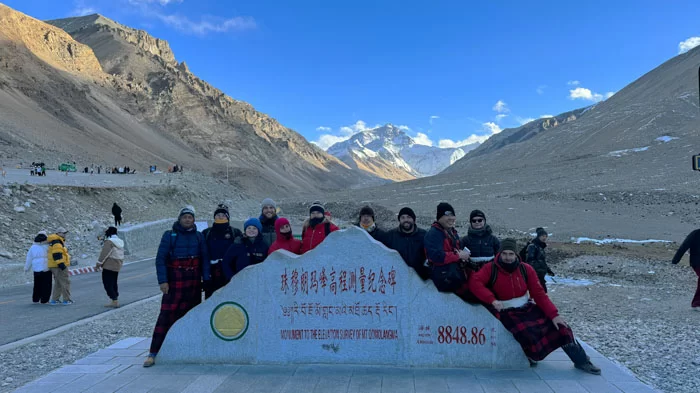 Visit a breathtaking view of Mt. Everest in Everest Base Camp.
Visit a breathtaking view of Mt. Everest in Everest Base Camp.
3. You can kora around the sacred center of Four World Religions - Mount Kailash in Tibet
Nestled in the remote western region of Tibet, specifically Ngari, Mount Kailash holds immense religious significance for Buddhists, Hindus, followers of the Bon religion, and Jains. Revered as a sacred center, it beckons pilgrims from all walks of life, drawing them to this holy site.
Located in close proximity to the revered Lake Manasarovar, Mount Kailash stands as a lifelong pilgrimage destination, captivating the hearts and souls of those seeking spiritual enlightenment.
It is believed that to take the Kailash Manasarovar Yatra will clean sin and get good fortune. And almost all Tibetans believe that circling Mount Kailash once during the Year of the Horse equals the spiritual impact of circling it thirteen times in other years.
For ordinary tourists, it is also worthwhile to visit Mount Kailash. The 3-day trek around Mount Kailash could be a lifetime experience and a huge sense of self-achievement.
4. Buddhism forms the bedrock of Tibet’s culture and daily life
Buddhism serves as the fundamental pillar of Tibetan culture and permeates every aspect of daily life. It holds a profound influence on the beliefs, traditions, and values of the Tibetan people. With its rich spiritual heritage, Buddhism shapes their worldview, guiding their interactions with the world and providing a source of solace and wisdom. Monasteries, meditation practices, and religious rituals are integral parts of Tibetan society, demonstrating the deep-rooted connection between Buddhism and the fabric of Tibetan culture.
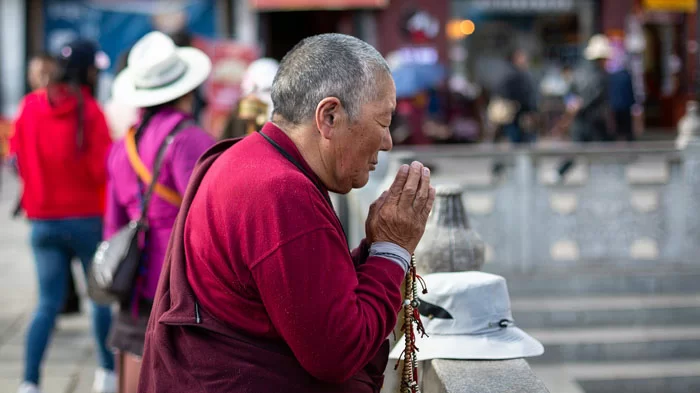 In Tibet the most Tibetans worship Buddhism.
In Tibet the most Tibetans worship Buddhism.
5. There are over 7000 monasteries in Tibet
With over 90% of the Tibetan population embracing Tibetan Buddhism, there were once more than 7000 monasteries in Tibet. Recently, there are still over 1000 monasteries in Tibet.
The must-visit Tibetan monasteries for your Tibet travel include the Potala Palace, the Jokhang Temple, the Sera Monastery, the Tashilhunpo Monastery, etc.
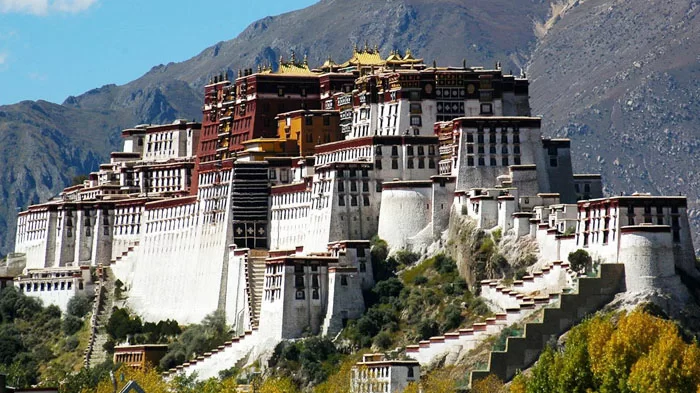 The majestic Potala Palace is the must-visit Tibetan monasteries for your Tibet travel.
The majestic Potala Palace is the must-visit Tibetan monasteries for your Tibet travel.
There is also a monastery on Mount Everest. The Rongbuk Monastery at 5009 meters above sea level, is the world’s highest monastery and a must-visit for EBC tours.
Of cause, there are many off-the-beaten-path monasteries that are worth a visit if you really keen on Tibetan Buddhism. Please feel free to contact us and tell us your travel ideas, we will recommend the monasteries that fit your interests according to your travel plan.
6. The five colors seen everywhere in Tibet have specific meanings for Tibetan Buddhism
If you have ever seen pictures or videos of Tibet, you may remember the red and white of the Potala Palace, the colorful prayer flags, and the golden roof of the Jokhang Temple.
In fact, red, white, yellow, green, and blue are the five most common colors in Tibet, which are often found in Tibet monasteries and some local decorations. They are the five main colors of Tibetan Buddhism.
In Tibetan Buddhism, red signifies fire, which has the power to transform the delusion of attachment into the wisdom of discernment.
White represents air, capable of cutting through the veil of ignorance and unveiling the wisdom of reality.
Yellow embodies earth, with the transformative ability to turn pride into the wisdom of equanimity when visualized in meditation.
Green symbolizes water, offering the potential to transmute jealousy into the wisdom of accomplishment.
Lastly, blue represents space, where anger can be transformed into wisdom through focused meditation on this color.
Meanings of Tibetan Buddhism Colors
7. Tibet is suitable for visiting all year round
While spring and autumn are optimal for mountain views, Tibet welcomes visitors throughout the year, catering to diverse interests and providing unique experiences in every season.
April to May and September to October is the best time to visit Tibet for the pleasant weather and clear mountain vistas.
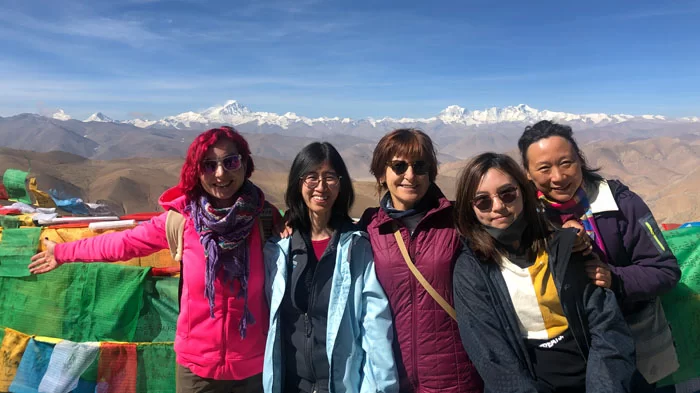 April to May and September to October is the best time to visit Tibet.
April to May and September to October is the best time to visit Tibet.
Winter, with discounted accommodations and flights, is a budget-friendly option. Mild daytime temperatures around 10°C make outdoor activities comfortable.
Summer, the rainy season in Tibet, sees increased rainfall, lush vegetation growth, and the highest oxygen levels in the entire region all year round. It is the peak season for domestic travelers visiting Tibet.
8. Tibet has its unique Tibetan Lunar Calendar
Tibet observes its own unique Tibetan Lunar Calendar, which holds immense cultural and religious importance. This traditional calendar, based on the moon's phases, sets the pace for Tibetan life and festivities.
The beginning of the Tibetan year typically falls between late January and early March, marking the Losar festival, a vibrant celebration of new beginnings.
The Tibetan Lunar Calendar not only guides the scheduling of festivals, ceremonies, and religious practices but also symbolizes the deep interplay between time, spirituality, and the rich cultural heritage of Tibet, adding to its allure and distinctiveness.
9. Summer in Tibet is the season for festivals
Compared to spring and autumn, summer is not a perfect time to visit Mount Everest in Tibet, because the rainfall may cause it difficult to see the mountain peak with clouds.
However, summer is the greatest time to experience Tibetan festivals. From the renowned Shoton Festival, known for its captivating Tibetan opera performances, to the exhilarating horse racing festivals on the vast grasslands, summer offers a delightful immersion into the rich tapestry of Tibetan traditions. The warm weather and festive atmosphere make it an ideal time to explore the unique cultural heritage, witness traditional dances, partake in joyful gatherings, and create lasting memories in the heart of Tibet.
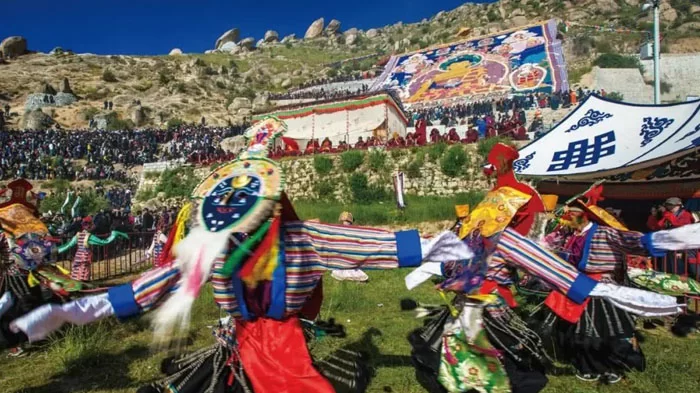 Tibet Drepung Monastery Shoton Festival.
Tibet Drepung Monastery Shoton Festival.
10. Lhasa is not the only city that has an airport in Tibet
The most convenient way is to take a flight to Lhasa. In fact, not only Lhasa has an airport in Tibet.
Currently, there are five airports in Tibet, and four of them are open to foreign tourists, namely Lhasa Gonggar Airport, Shigatse Airport, Ngari Airport, and Nyingchi Airport.
Only Lhasa Gonggar Airport serves international flights between Lhasa and Kathmandu. Other airports in Tibet are all for domestic flights.
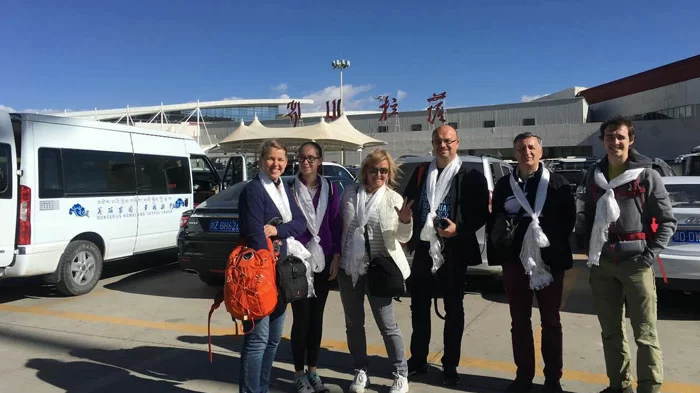 We offer Airport Pick-up Service at Lhasa Gonggar Airport
We offer Airport Pick-up Service at Lhasa Gonggar Airport
11. Tibet has a modern high-speed railway as well
Tibet boasts not only the renowned Qinghai-Tibet railway but also modern high-speed railways that enhance connectivity within the region. You can now enjoy the convenience of bullet trains linking Lhasa, Shigatse, and Nyingchi. Whether embarking on a spiritual journey or exploring the region's natural wonders, the modern high-speed railways in Tibet offer a remarkable opportunity to experience the beauty and grandeur of this enchanting land with speed and ease.
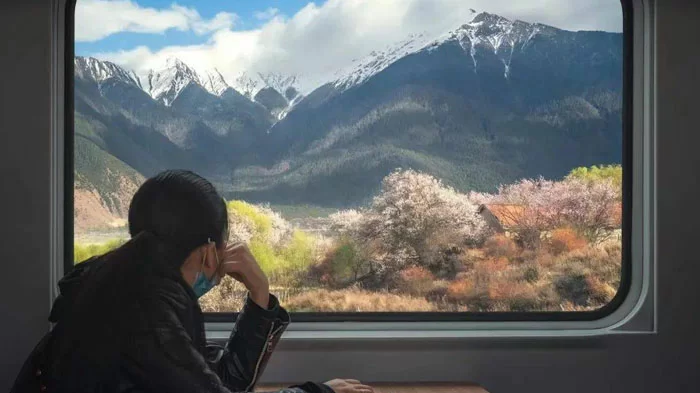 Nyingchi to Lhasa high-speed railways view.
Nyingchi to Lhasa high-speed railways view.
12. Tibet has snow mountains, lakes, deserts, river valleys, and even forests
Tibet, a land of awe-inspiring diversity, encompasses snow-capped mountains, serene lakes, vast deserts, winding river valleys, and even enchanting forests.
The Majestic Himalayas pierce the sky, while crystal-clear Yamdrok Lake mirrors the surrounding beauty. The surreal landscapes of deserts in Ngari evoke a sense of serenity, while the meandering river valleys in Nyingchi unveil hidden treasures at every turn. The lush Lulang forest adds a touch of enchantment to this captivating region.
With such a rich tapestry of natural wonders, Tibet beckons adventurers to explore its breathtaking scenery and immerse themselves in its unparalleled splendor.
13. A trip to Tibet could cost anywhere from a hundred to a few thousand US dollars
When planning a trip to Tibet, the cost can vary significantly, ranging from a hundred to a few thousand US dollars. The expense depends on various factors, such as the travel time, the chosen route and the duration of the tour.
Joining a small group tour is often the most cost-effective option, as you can share some tour costs with the group members.
It's important to note that Tibet is not considered a cheap destination to visit. However, by opting for one of our meticulously curated tours, you'll discover that every penny spent is truly worthwhile.
14. You can see the Potala Palace from a hotel room
In Tibet, it is a remarkable experience to behold the majestic Potala Palace right from the comfort of your hotel room. This iconic architectural marvel stands tall and proud, casting its awe-inspiring presence over the cityscape.
 Lhasa Shangri-La Hotel Potala Palace landscape room.
Lhasa Shangri-La Hotel Potala Palace landscape room.
Several hotels in Lhasa offer stunning views of the iconic Potala Palace. Some notable accommodations that provide glimpses of this architectural marvel from their rooms include the St. Regis Lhasa Resort, the Shangri-La Hotel Lhasa, and InterContinental Lhasa Paradise.
15. There is a highway road throughout Tibet from the East to the West
The Sino-Nepal highway, of which the Chinese section is known as G318, is the most important highway throughout Tibet from the east to the west.
It allows for an awe-inspiring Lhasa to Kathmandu overland adventure, including a remarkable crossing of Mount Everest from Tibet to Nepal. It connects the prominent destinations in Tibet, such as Lhasa, Shigatse, the Mount Everest, and extends all the way to the Gyirong border. You can enjoy the convenience of a well-maintained road, making it an ideal choice for embarking on an unforgettable overland tour in Tibet.
16. The blue color of Yamdrok Lake in Tibet could be changed by the weather
Yamdrok Lake is known for its stunning turquoise-blue color, which is often attributed to the minerals and sediments present in the water. However, the intensity and shade of the blue can be altered by different weather patterns.
On a clear day with bright sunlight, the lake's color tends to appear more vibrant and vivid, showcasing its characteristic deep blue or turquoise hue, while during cloudy or overcast weather, the lake's color may appear slightly duller or less intense. What kind of Yamdrok Lake you will see will be one of the surprises to look forward to on your Tibet tour.
The Ultimate Guide for Visiting Yamdrok Lake
17. Tibetan Barley is the staple food in Tibet
Tibetan barley serves as the staple food in Tibet, because it is highly nutritious and well-suited to the high-altitude climate of Tibet. It is a vital part of the Tibetan diet and plays a significant role in Tibetan cuisine.
Once you visit Tibet, you can enjoy a variety of food and drinks made from Tibetan barley. One popular dish is "tsampa," a roasted barley flour that is mixed with butter tea to create a hearty porridge. You can also try "thukpa," a traditional noodle soup made with barley flour noodles and vegetables or meat. Another delicious treat is "balep," a barley bread that is often served with butter or yak cheese. Additionally, "chang" is a traditional Tibetan barley beer that you can sample for a unique taste of local brewing.
 The thukpa made from Tibetan barley.
The thukpa made from Tibetan barley.
18. Tibetans raise yaks not only for their meat but for other purposes as well
Tibetans raise yaks for various purposes beyond meat production. Yaks are highly valued animals in Tibetan culture and play a vital role in their way of life. Apart from their meat, yaks provide milk, which is used to make butter, cheese, and other dairy products. Yak hair is utilized to create warm clothing, blankets, and ropes. Yaks also serve as pack animals, carrying heavy loads across the rugged terrain of Tibet. Even their dung can be used as fuel for heating and cooking.
19. In Tibet, time moves at a leisurely pace
In Tibet, a leisurely pace of life is embraced and valued by the locals. Tibetans find joy in savoring a slower rhythm. They often gather with friends at local teahouses, enjoying each other's company and engaging in meaningful conversations. Additionally, they cherish moments with family and friends by taking a ‘Linka’ (Tibetan-style picnic), creating opportunities for relaxation and bonding.
When visiting Tibet, it is recommended to take the unhurried pace and indulge in a leisurely experience at a local teahouse along Barkhor Street, allowing oneself to truly appreciate the essence of Tibetan life.
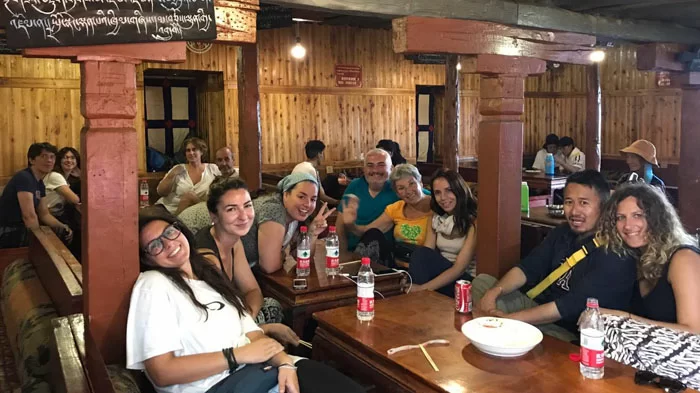 Enjoy a slower rhythm at local teahouse along Barkhor Street.
Enjoy a slower rhythm at local teahouse along Barkhor Street.
20. In Tibet, wearing sunglasses serves a purpose beyond looking cool
In mesmerizing Tibet, sunglasses are more than just a fashion statement—they're a practical necessity. With its high altitude and crystal-clear skies, Tibet experiences intense sunlight and heightened UV radiation. To fully enjoy the breathtaking landscapes without risking your eye health, don a pair of stylish shades. Not only will they shield your eyes from harmful rays, but they'll also reduce glare and protect against conditions like snow blindness.
So, keep your eyes safe and your style on point as you explore the wonders of Tibet!
Embark on an extraordinary journey to uncover the true facts about Tibet firsthand!
As a local Tibetan travel agency, we are passionate about sharing our profound knowledge of our hometown with you. While we can offer insights and information, we believe that experiencing Tibet is the ultimate way to understand its unique culture and captivating landscapes. Come and join us as we guide you through the real Tibet, where ancient traditions thrive and breathtaking vistas await at every turn.

Well, who doesn’t like a welcoming and versatile Tibetan guide who travels with you and captures your precious Tibet travel moments professionally? Mr. Keldor, our expert Tibetan guide and a pro photographer, is your best bet.
Additionally, Keldor is fluent in English, German, Mandarin, and Tibetan, and his extensive knowledge of Tibetan Buddhism and local customs equips him to handle diverse tour groups in Tibet with ease. Here, enjoy Keldor’s pro travel tips to get fully prepared for your Tibet tour.
-

Lhasa - Gyantse - Shigatse - Everest Base Camp - Shigatse - Lhasa
USD939
View Details -

Lhasa - Gyantse - Shigatse - E.B.C - Saga - Kailash Trek - Darchen - Lake Manasarovar - Saga - Gyirong - Tingri - Lhasa
USD2059
View Details -

10 Days Lhasa to Everest Base Camp and Namtso Lake Small Group Tour
Lhasa - Gyantse - Shigatse - EBC - Shigatse - Lhasa - Namtso Lake - Damxung - Lhasa
USD1289
View Details -

8 Days Driving Across Himalaya Overland Adventure from Kathmandu to Lhasa
Kathmandu - Gyirong - Everest Base Camp - Tingri - Shigatse - Gyantse - Lhasa
USD1069
View Details -

4 Days Lhasa Impression Small Group Tour: Explore the Heart of Tibet and Mingle with the Locals
Lhasa
USD509
View Details -

Lhasa - Gyantse - Shigatse - Everest Base Camp - Gyirong - Kathmandu
USD979
View Details -

Lhasa - Gyantse - Shigatse- Lhasa
USD799
View Details -

13 Day Lhasa, Mt. Everest, Mt. Kailash, Lake Manasarovar and Kathmandu Adventure Tour
Lhasa - Gyantse - Shigatse - EBC - Saga - Darchen - Kailash Trek - Darchen - Saga - Gyirong - Kathmandu
USD2059
View Details


.jpg)



